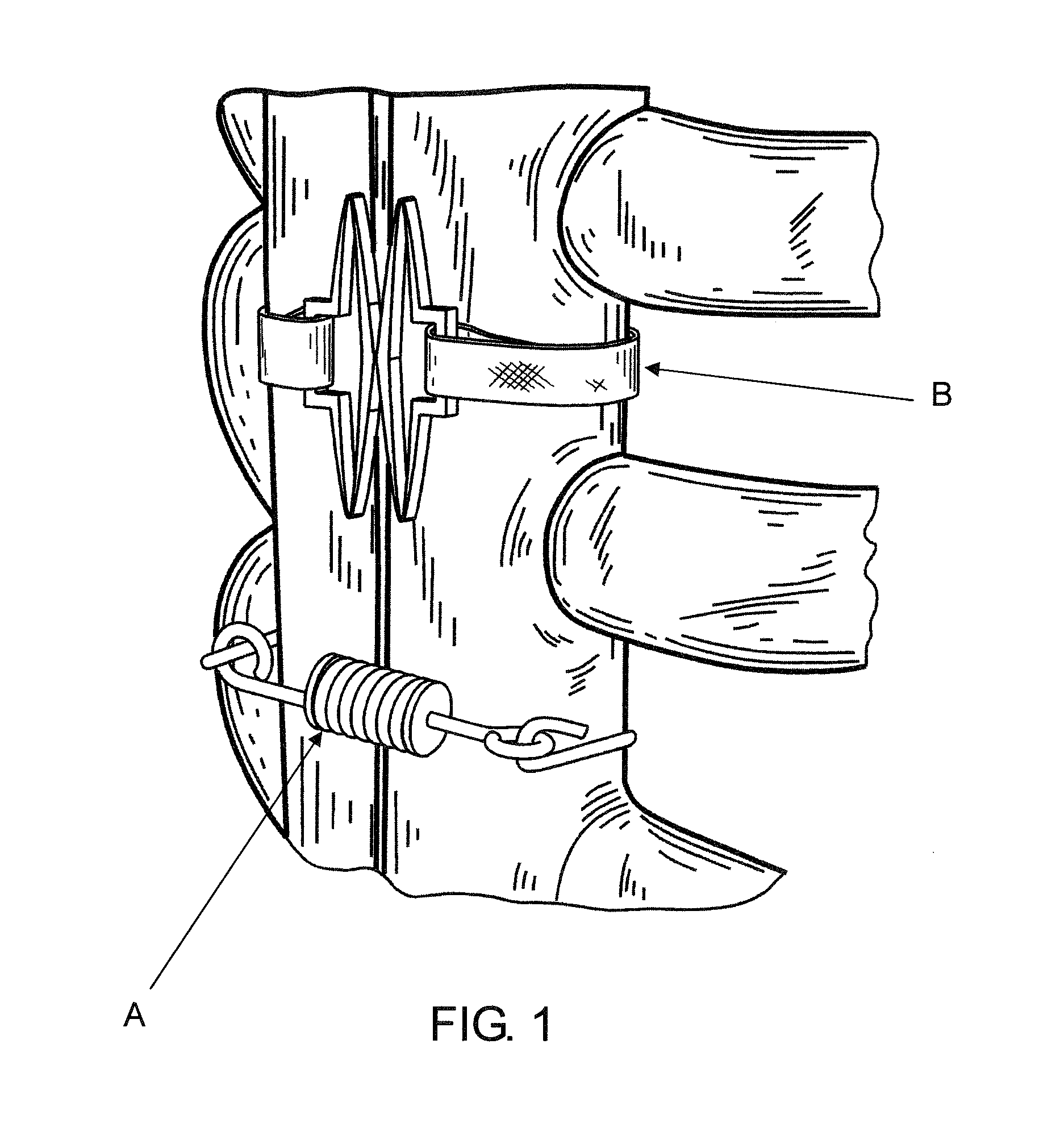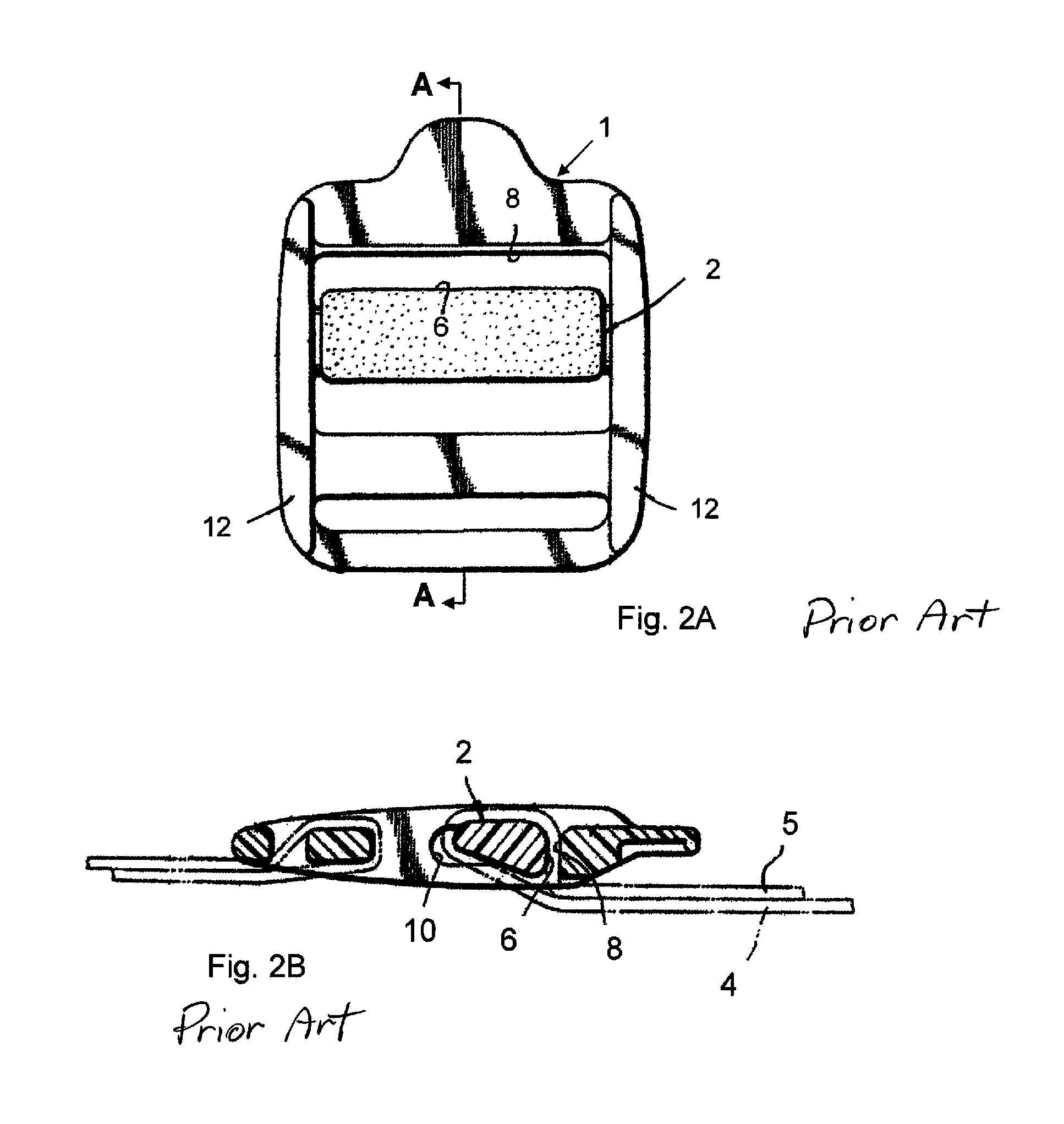Flat suture banding system and methods
a banding system and suture technology, applied in the field of surgical repair of separated body tissues, can solve the problems of difficult healing, large spring materials, and difficult to keep bone fragments together so as to heal, and achieve the effects of reducing the profile of the implant, preventing and reducing the damage to the bar and the attachmen
- Summary
- Abstract
- Description
- Claims
- Application Information
AI Technical Summary
Benefits of technology
Problems solved by technology
Method used
Image
Examples
Embodiment Construction
[0050]Referring now more particularly to the drawings, there is shown in FIG. 1 an example of how wires and bands might be used in binding sternal halves together for healing after open heart surgery. As noted above, two different devices are shown side by side, for comparative purposes. Device A is a prior art spring device, while Device B is an inventive device described in related application Ser. No. 12 / 406,909.
[0051]A strap locking system similar to that shown in FIG. 1, with a common buckle 1 is represented in FIGS. 2A and 2B. A common buckle 1, of a type sometimes used for straps on bags, is suitable for use in this application because of its variable tensioning abilities. Lock bar 2 moves surface 6 away from surface 8 when strap tail 5 is tensioned. As strap tail 5 is tensioned, strap tail 4 is pulled into the 6 / 8 surface interface. When strap tail 5 is released, strap tail 4 holds the dominate tension which pulls lock bar 2 so that the strap is pinched between surfaces 6 an...
PUM
 Login to View More
Login to View More Abstract
Description
Claims
Application Information
 Login to View More
Login to View More - R&D
- Intellectual Property
- Life Sciences
- Materials
- Tech Scout
- Unparalleled Data Quality
- Higher Quality Content
- 60% Fewer Hallucinations
Browse by: Latest US Patents, China's latest patents, Technical Efficacy Thesaurus, Application Domain, Technology Topic, Popular Technical Reports.
© 2025 PatSnap. All rights reserved.Legal|Privacy policy|Modern Slavery Act Transparency Statement|Sitemap|About US| Contact US: help@patsnap.com



